Towards the end of April, my mother and I flew to London for the first time in 13 years. Our main places of interest during our 2-night stay were ZSL London Zoo, the Natural History Museum, and Crystal Palace Park. While we had visited the zoo and the museum on our previous trip, we had never before visited Crystal Palace, which is famous for the old dinosaur models that I wanted to see.

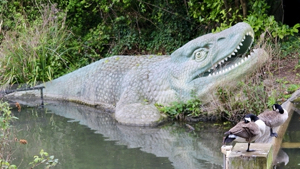
On Tuesday, we arrived at Heathrow Airport and took the train to our apartment. After unpacking and getting lunch, we took the train to Crystal Palace Park in the south of London. The models of the prehistoric animals were located around the lower lake of the park, and are an important part of history, as they are the world’s first three-dimensional reconstructions of long-extinct creatures. Despite being called “Crystal Palace Dinosaurs”, only three of the species represented are true dinosaurs: Iguanodon, Megalosaurus and Hylaeosaurus. The other extinct creatures surrounding the same island included marine reptiles such as a Mosasaurus, plesiosaurs, ichthyosaurs, and Teleosaurus (crocodile-like reptiles), as well as winged pterosaurs, labyrinthodonts (crocodile-like amphibians) and a dicynodont (a so-called ‘stem-mammal’). Another island nearby featured several ancient mammals, including the giant ground sloth Megatherium, the herbivorous ungulate Anoplotherium, and the horse relative Palaeotherium, as well as three models of the giant deer Megaloceros nearby along with a model of a Xiphodon, another even-toed ungulate. The models were built in 1854 by Benjamin Waterhouse Hawkins and have obviously aged very poorly as our understanding of dinosaurs and other prehistoric animals has improved 170 years later (for example, Iguanodon‘s “nose horn” was actually a thumb spike). But as I’ve said, they are of historical importance as they represent what little we knew about these creatures at the time, and how we can learn from the mistakes of the past. This website provides an excellent guide on each of the statues, with comparisons between the statues and how the animals really would have looked in life.
Apart from the dinosaur models, I also enjoyed observing the local wildlife in the park, including ring-necked parakeets, Canada geese, Egyptian geese, grey squirrels, brown rats, and a raven, despite the fact that none of these species – bar the raven – are native to the UK. Some of the Canada geese even hung out around the plesiosaur and Mosasaurus models. We spent about an hour and a half at Crystal Palace before we took the train back to our apartment.

On Wednesday, we walked through Regent’s Park to visit London Zoo, stopping off for breakfast along the way to the park and the zoo. There have been many changes since our last visit, including the additions of Tiger Territory, Land of the Lions, In With the Lemurs, Monkey Valley, and most recently The Secret Life of Reptiles and Amphibians. However, I most wanted to see the Sulawesi babirusa, a bizarre pig with large tusks that (in the males) pierce through the roof of the snout and curl towards the forehead. They have been at the zoo since 2020, and they are a male and female pair that live in separate enclosures. Before the babirusas, we stopped at the Outback area, then went into the Attenborough Komodo Dragon house to see the zoo’s lone Komodo dragon Khaleesi, and popped into the African Bird Safari before heading through Tiger Territory to the babirusas’ area.

I was initially concerned that we would not see either babirusa after hearing some comments on ZooChat.com that some users of that forum had no luck seeing them. Luckily, the Casson Pavilion was open, so we went inside and saw the female babirusa in her indoor enclosure. We watched the female for quite some time as she walked around her enclosure, making strange chirping vocalisations and even at one point carrying a bundle of hay on top of her head for about 10 seconds. I then wondered if we would ever see the male, as I saw a second enclosure to the left of the red river hogs, which was being cleaned out by a keeper. I decided to head back outside to the first babirusa enclosure while the tigers’ keeper talk was taking place, and to my excitement, I saw the male wandering around the paddock, giving me a chance to snap some photos. I then headed back indoors, where the male headed, and spent a long time watching and photographing him.
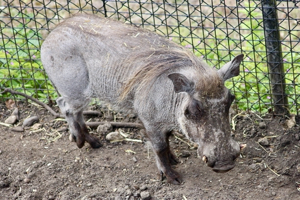
After the babirusas, we went over to Land of the Lions where we saw male Asian lion Bhanu resting, along with a new species for us: the Hanuman langur. We then headed to the Blackburn Pavilion to see some exotic birds such as the Javan green magpie, only to see that it was closed for maintenance. We then decided to head inside the new reptile and amphibian house to see a variety of species we had never seen before, including the Chinese crocodile lizard, big-headed turtle, Titicaca water frog, and especially the Chinese giant salamander, the largest amphibian in the world. Many of these species are of conservation priority under ZSL’s EDGE of Existence programme. We ultimately had to leave the house due to the crowds of schoolchildren coming to visit. Next, we popped in to see the Galapagos giant tortoises in Giants of the Galapagos, but we seemed to have come in at the wrong time, as the schoolchildren also came in after us. We then decided to head back into the Casson Pavilion to have our lunch, as it was relatively quiet and not very busy, allowing me to spend even more time watching and photographing the male babirusa.
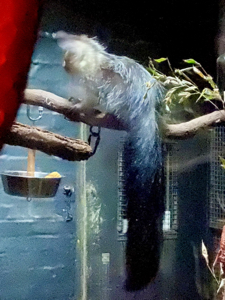
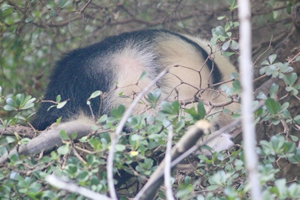
After lunch, we headed over to the ‘pink zone’, the side of the zoo that can be accessed via either of two tunnels. Passing the small-clawed otters and dwarf mongooses, we went inside the zoo’s Rainforest Life exhibit, which was home to sloths, tamarins, sakis, titis, fruit bats, and a sleeping tamandua. The tamandua was another first for us, but another new species for us was a pair of Bokiboky (pronounced “Boo-ky Boo-ky”), a small Madagascan carnivore also called the narrow-striped mongoose and a relative of the fossa. We then popped downstairs to the Night Life area, where we saw naked mole-rats, Malagasy giant jumping rats, slender lorises, and a pygmy slow loris.
Upon leaving Night Life, we headed back towards the Komodo dragon house for the keeper talk. We then attended the pygmy hippo talk afterwards, where I told the keeper that I saw the female hippo, Amara, as a baby in Edinburgh Zoo 2 and a half years ago. Next, we attended the keeper talk at In With the Lemurs, after which we saw the zoo’s pair of aye-aye in the indoor part of the exhibit. Due to having scaffolding between the aye-ayes’ enclosure and the outdoor ring-tailed lemur walkthrough, it is somewhat lighter than Dublin Zoo’s nearly-year-old aye-aye house, but I only managed to get one photo of one of the aye-ayes with its face just turned away from my phone camera. While Mum sat outside, I went for another stroll in Rainforest Life and Night Life, taking more photos of the Bokiboky and being lucky enough to see the bushbabies. Before we left, we went through Monkey Valley, a conversion of the former Snowdon Aviary that is now a colobus enclosure, and saw the zoo’s three warthogs briefly before they went back inside. After popping into Gorilla Kingdom to see if the gorillas were visible (which they were not), we left the zoo less than an hour before closing time and took the bus back to our apartment.
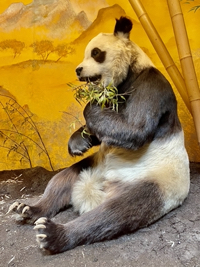
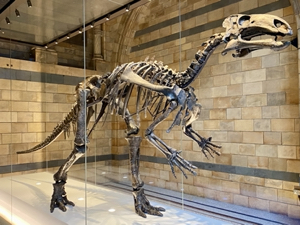
On Thursday, after leaving our apartment, we headed through Hyde Park to visit the Natural History Museum, leaving our luggage in one of the museum’s cloakrooms. We had booked to attend the Wildlife Photographer of the Year exhibition so that we could see the breathtaking (though sometimes harrowing) photographs of various animals, plants, and fungi. After the exhibition, we got ourselves hot drinks and a brownie in the museum’s café, which also had a display case for Chi Chi, the giant panda that lived in London Zoo from 1958 to 1972. It was after our tea break that we went to look around the museum and visit the rooms of interest.

The most obvious change since our last visit was the replacement of the Diplodocus skeleton ‘Dippy’ with the blue whale skeleton ‘Hope’ in the museum’s Hintze Hall, while the Mammals (Blue Whale) hall had undergone refurbishment before our visit. In the green zone there is the Birds gallery (with a shoebill as the main highlight), the Marine Reptiles gallery (which also has a Megatherium skeleton), and the Cadogan gallery, which houses the museum’s ‘Treasures’, including the first Archaeopteryx fossil ever found, a Barbary lion skull from the Tower of London, a dodo skeleton, a great auk, and Guy the gorilla who lived in London Zoo from 1947 to 1978. In the Red zone, we entered ‘From the Beginning’, which takes visitors on a journey through Earth’s history, and saw “Sophie”, the most complete Stegosaurus skeleton known and another addition since our first visit.

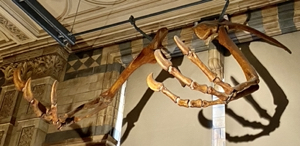

In the blue zone (the most interesting zone for me), we entered the Fishes, Reptiles and Amphibians gallery (featuring a Komodo dragon, both species of gharial, and the Japanese giant salamander, the Chinese giant salamander’s smaller cousin), the Mammals gallery (highlights being the Ethiopian wolf and sloth bear) and arguably the most popular area – the Dinosaurs gallery (highlights being Iguanodon, Baryonyx and the arm bones of Deinocheirus). The balcony in the Dinosaurs gallery, which we were on when we last visited, had been closed since 2018 according to some volunteers, forcing me to take my photos from ground level. The aforementioned Blue Whale Hall, where most of the large and marine mammals were displayed, is perhaps my favourite room in the whole museum. The big thing here is the model of a blue whale that was beached in Wexford in 1894 (the same one whose skeleton now dominates the main hall), but highlights for me here included the skeleton of Arsinoitherium, a rhino-like mammal that is actually more closely related to elephants and lived about 30 million years ago in North Africa, as well as a cast of the skull of Andrewsarchus (see the essay about Andrewsarchus that I wrote last year). Other things of interest included a critically endangered Javan rhinoceros, the models of various prehistoric elephants, and the 1986 animated documentary From Forests to Grasslands. The changes made to the gallery before our visit are detailed in this video.
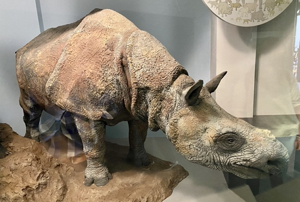
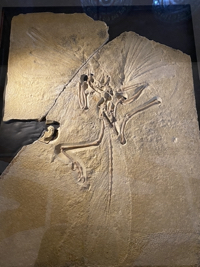
Even though I was happy to visit the museum again, if there was one thing that detracted from the experience, it’s definitely the heaping crowds flowing throughout the museum. To quote David Attenborough in his Natural History Museum Alive TV film: “Sometimes, it gets so crowded, that it can be quite difficult to get as close to the exhibits as you might wish”. Nevertheless, we were able to get close enough to the specimens I most wanted to see. Before leaving the museum, I popped into the gift shop, and bought a blue whale plush (only 15cm long!), the Wildlife Photographer of the Year exhibition’s portfolio, and the book Dinosaurs: How they lived and evolved by Darren Naish and Paul Barrett. After collecting our luggage from the cloakroom, we left the museum just as they were closing for the day, and got the train back to Heathrow in time for our flight back to Dublin.
I was happy getting to visit London again after 13 years, and I would say I enjoyed visiting the zoo and museum even more now that I’m older. I was especially happy getting to see the babirusas in the zoo (my first time seeing the species since visiting Chester Zoo a decade ago), along with species I had never seen outside of books, documentaries or the internet, such as the Chinese giant salamander, tamandua, and Hanuman langur. And of course, I enjoyed seeing my favourite exhibits in the Natural History Museum, as well as the historically important statues of prehistoric beasts in Crystal Palace Park for the first time.
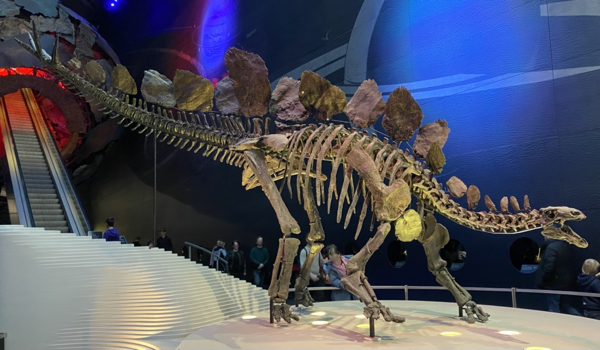


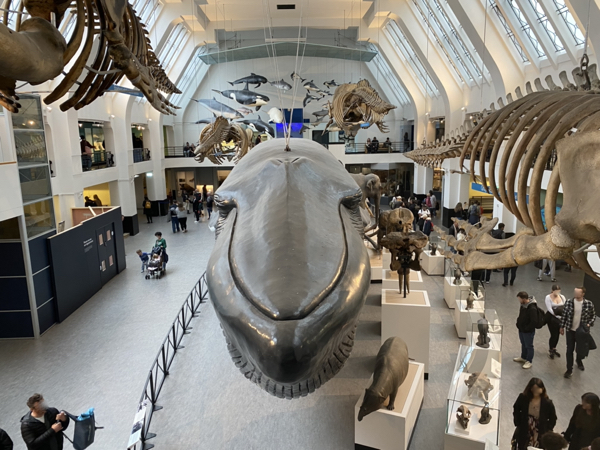
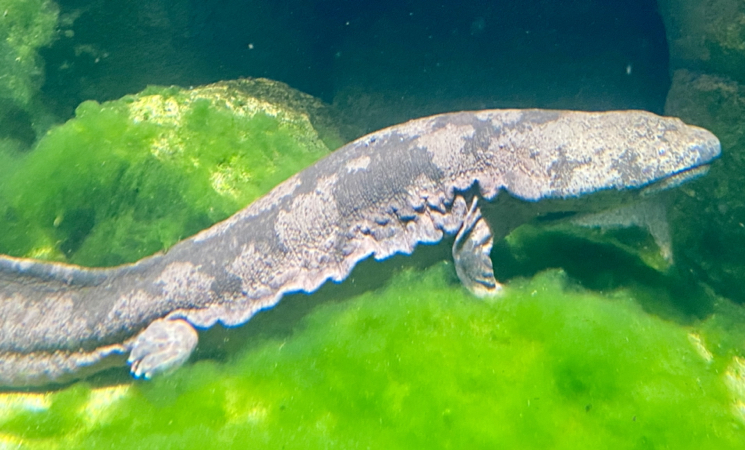
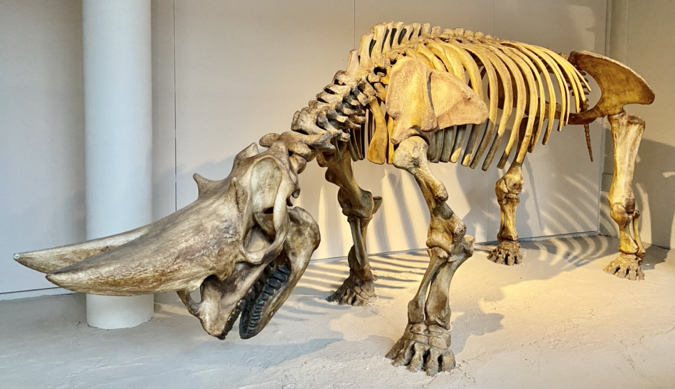
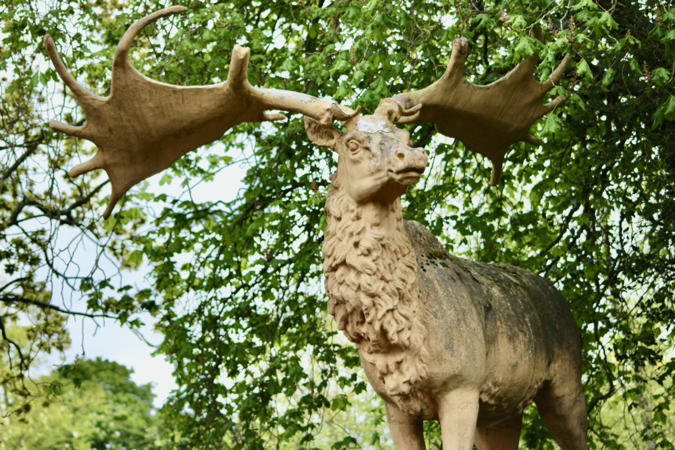
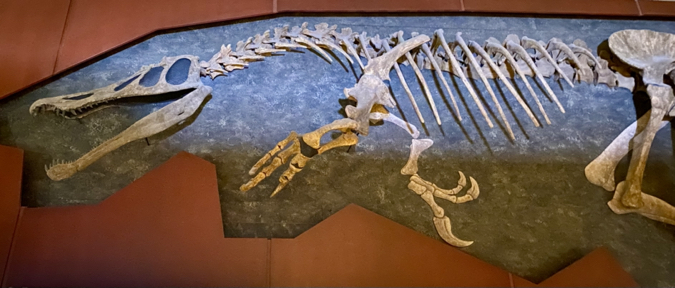
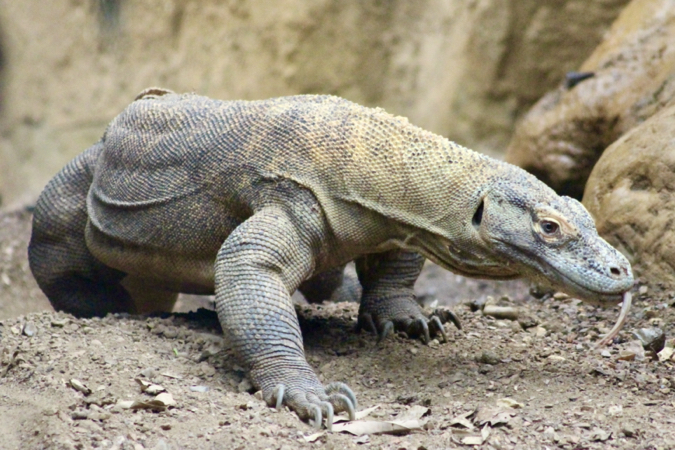
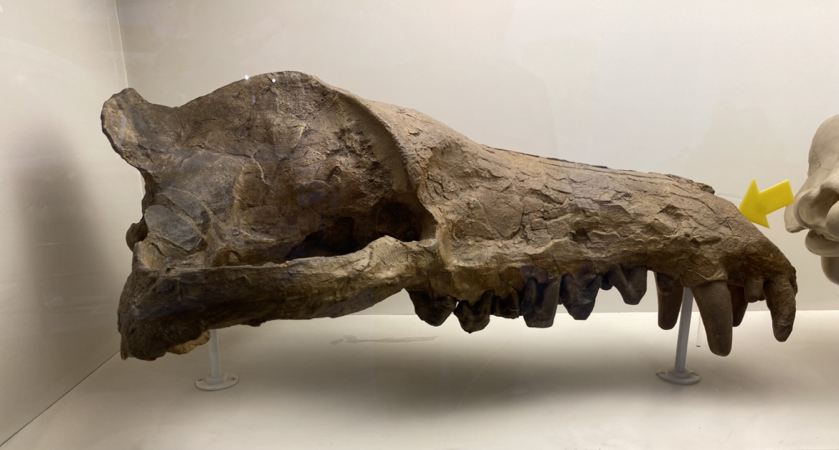
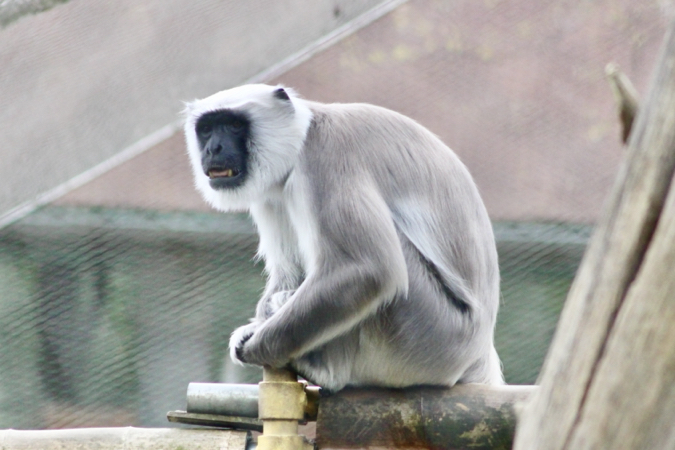
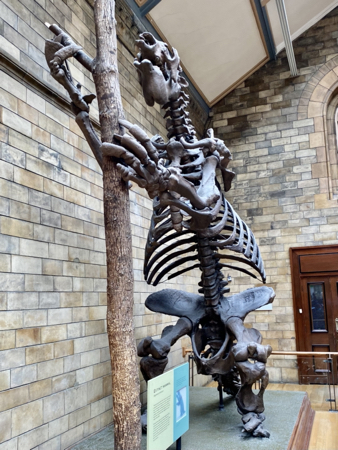
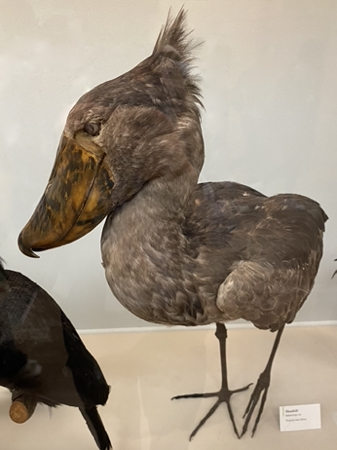

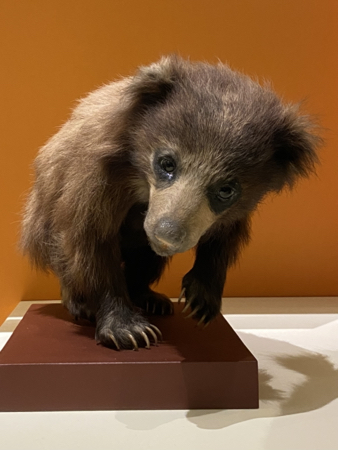

Leave a Reply
You must be logged in to post a comment.